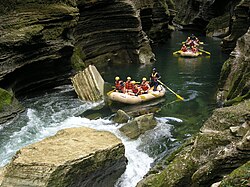This article includes a list of general references, but it lacks sufficient corresponding inline citations .(October 2017) |
| Ramsar Convention on Wetlands of International Importance Especially as Waterfowl Habitat | |
|---|---|
 Ramsar logo | |
| Signed | 2 February 1971 |
| Effective | 21 December 1975 |
| Condition | Ratification by 7 states |
| Signatories | 23 [1] |
| Parties | 172 [1] |
| Depositary | Director General of UNESCO |
| Languages | English (prevailing in case of divergence), French, German, Russian and Spanish [1] |
The Ramsar Convention on Wetlands of International Importance Especially as Waterfowl Habitat is an international treaty for the conservation and sustainable use of Ramsar sites (wetlands). [2] It is also known as the Convention on Wetlands. It is named after the city of Ramsar, a city in the Mazandaran province of Iran, where the convention was signed in 1971.
Contents
- List of wetlands of international importance
- International cooperation
- International organization partners
- Other partners
- Bodies established by the convention
- Conference of the Contracting Parties
- The Standing Committee
- The Scientific and Technical Review Panel
- The Secretariat
- World Wetlands Day
- History
- Deficiencies in the treaty and its implementation
- See also
- Notes
- References
- External links
Every three years, representatives of the contracting parties meet as the Conference of the Contracting Parties (COP), the policy-making organ of the convention which adopts decisions (site designations, resolutions and recommendations) to administer the work of the convention and improve the way in which the parties are able to implement its objectives. [3] In 2022, COP15 was held in Montreal, Canada.







